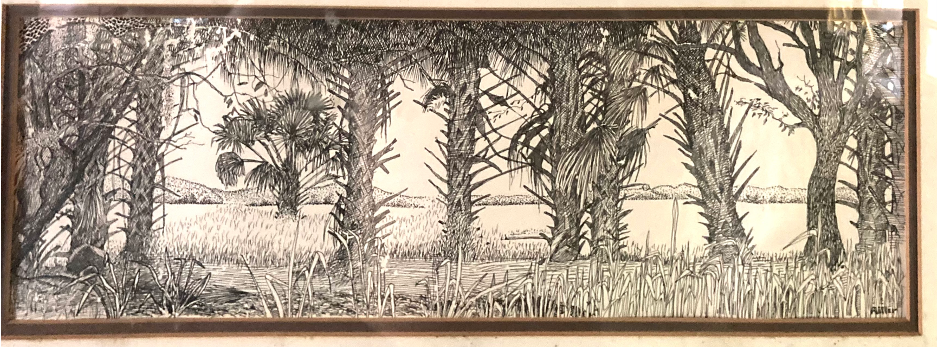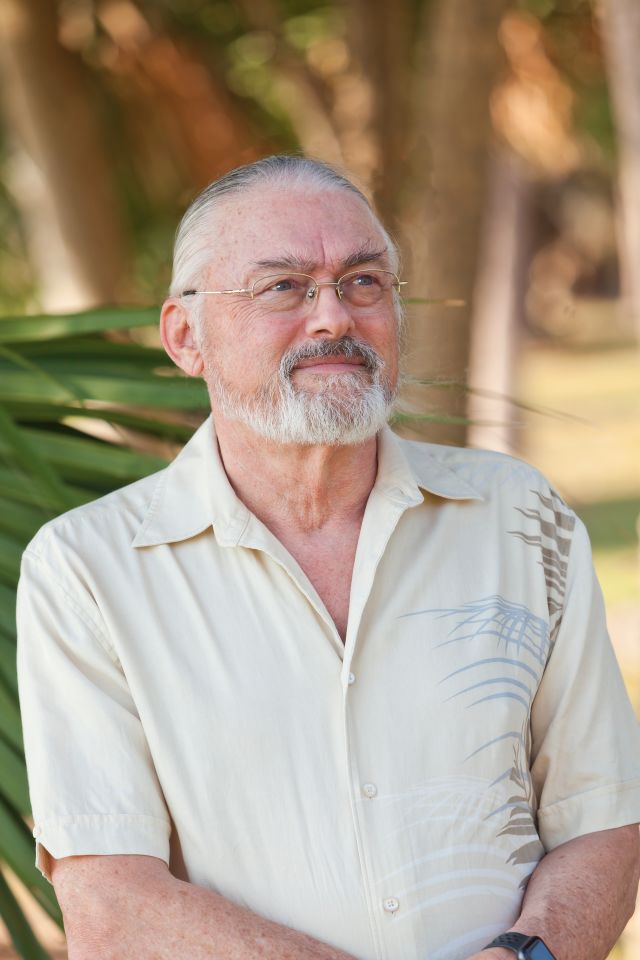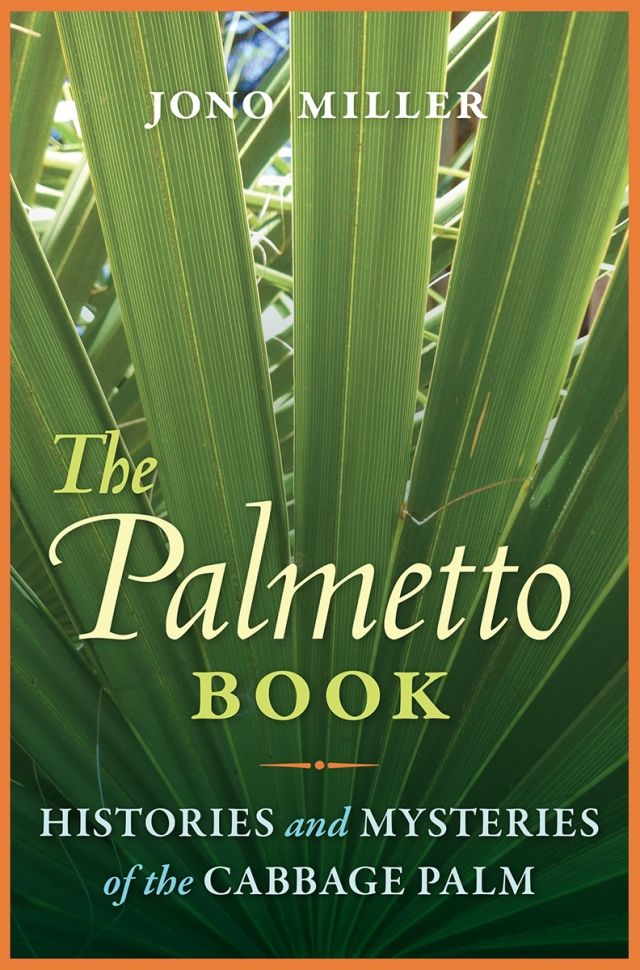A Sarasota Environmentalist's New Book Is a Love Letter to the Cabbage Palm

Miller's drawing of cabbage palms
Image: Jono Miller
Behold! The common sabal palm tree. Also known as the cabbage palm or swamp cabbage, the tree’s ubiquity in the South, especially in the Southern Florida landscape, makes it go almost unnoticed. And while the tree is our subtropical hallmark, it gets little respect from Floridians. In fact, more people think of the exotic coconut tree when they think of Florida than they do the cabbage palm.

Jono Miller
Image: Courtesy Photo
Resident palm enthusiast Jono Miller is on a mission to change all that. Miller, a natural historian and the former director of the Environmental Studies Program at New College of Florida, has just published The Palmetto Book: Histories and Mysteries of the Cabbage Palm. It’s a collection of essays meant to give the palm the credit it's due.
Wearing a mask and a long gray ponytail, Miller picked me up at my downtown apartment in his 20-year-old Toyota Tacoma stick shift one warm Thursday afternoon to show me I was wrong to overlook the palm.
I’ve never really thought much about them. They’ve been a tropical white noise, lanky things that backdropped my Florida upbringing and seemed to provide no purpose or pleasure beyond their own natural instinct to grow. Miller’s plan was to drive me around Sarasota on a tree-spotting tour so I could see what makes them special. But first he began to inspect my yard. He quickly pointed out sabal palms I didn’t realize were there. I had four. He seemed pleased.
We headed south down U.S. 41. Much to the chagrin of the cars behind us, Miller puttered down the road so that he could point out palms along the way. He particularly enjoyed pointing out rogue sabals that volunteered to grow in the parking lots of commercial buildings.
Miller has spent decades as an activist trying to protect Florida’s environment; the last 10 years have been spent researching the cabbage palm. He has an encyclopedic knowledge of its ecological and historical importance in Florida.
Sabal palms provide food and shelter for more than 80 species of animals, including honeybees and the endangered Florida scrub jay, which uses the palm’s hair-like fibers to line its nest. Humans used the palms to build things, as well. From Seminole chickees to the Revolutionary War’s Fort Moultrie to an Elvis movie set, the palm has been part of our historical and ecological infrastructure.
Raised in New Jersey, Miller wasn’t fascinated with palm trees until he attended New College in the late ’60s and a friend asked him to draw one. They had “character,” he remembers. And Miller also just likes underdogs. The live oak is the most popular landscape plant in Sarasota. Cabbage palms are way down on the list. And while Miller appreciates a good oak tree, he believes a cabbage palm would often be a better choice to plant.
“Eventually, the oak’s ever-increasing diameter of roots starts lifting adjacent pavement, pavers or sidewalk. Risk managers take notice, and the oaks are removed and we start over,” says Miller. “Cabbage palm roots don't increase in diameter.” Many people also prefer oaks for their shade. “But planting multiple cabbage palms close together will produce as much shade as anyone can tolerate. The hammocks of Myakka River State Park prove that,” he says.
So we drove to Myakka. Miller immediately pointed out two of the park’s eight palm log cabins. One of them is a welcome center. The smaller of the two is a bathroom—which seemed to diminish its historical importance. What Miller really wanted to show me was a rare, variegated cabbage palm. The unusual genetic mutation causes the normally green fronds to have blond highlights. When we arrived at the spot, the young variegated palm was gone—mowed over by a landscaper.

The Palmetto Book: Histories and Mysteries of the Cabbage Palm, by Jono Miller
Image: Courtesy Photo
What I appreciated most about Miller’s tour and book is that the palm tree is a contradiction. It is both threatened and threatening. It is difficult to grow and impossible to get rid of. It is both a tree and not. It is a fire hazard and fireproof. Mostly, though, what I gathered from the book and my time with Miller was that the sabal palm is something to pay attention to. I watched Miller approach a group of palm trees in Myakka and deduce why the trees grew the way they did. There was something beautiful about the noticing of things. To give something, or someone, your attention can be a meaningful communion with the world outside yourself.
We took I-75 home and Miller continued to point out more palms. Our last stop occurred on Palm Avenue, between Main Street and Cocoanut Avenue. On the north side of the street, just in front of a new smoke shop, stood a line of symmetrically planted sabal palms. The trees were spindly and draped in Christmas lights. I’ve walked past them a hundred times before. Miller lovingly put his palm on a tree and told me they were more than 100 years old.
Miller returned me to my apartment. I made my way through the yard to get to the back door. I noticed two more young sabal palms jutting out of the ground.
Palm Readings
Strong and vulnerable. Of all of Florida’s trees, sabal palms are the least likely tree to suffer in a hurricane. (Pruning them in advance of a storm, however, makes them vulnerable to wind.)
Respect your elders. The oldest remaining landscaping trees in downtown Sarasota are cabbage palms planted in 1911 on Palm Avenue.
Slow pokes. Palm trees grow so slowly that they are typically harvested from ranches instead of growing them from seed.
Heartbreaking. The center core, or heart, of the palm’s new fronds, looks like a cabbage head—hence the name cabbage palm—and is also a tasty vegetable. That’s where we get hearts of palm and swamp cabbage. Warning: Taking out the heart kills the palm.
Footnotes. The forked base of the frond is called a boot, short for bootjack.
.
